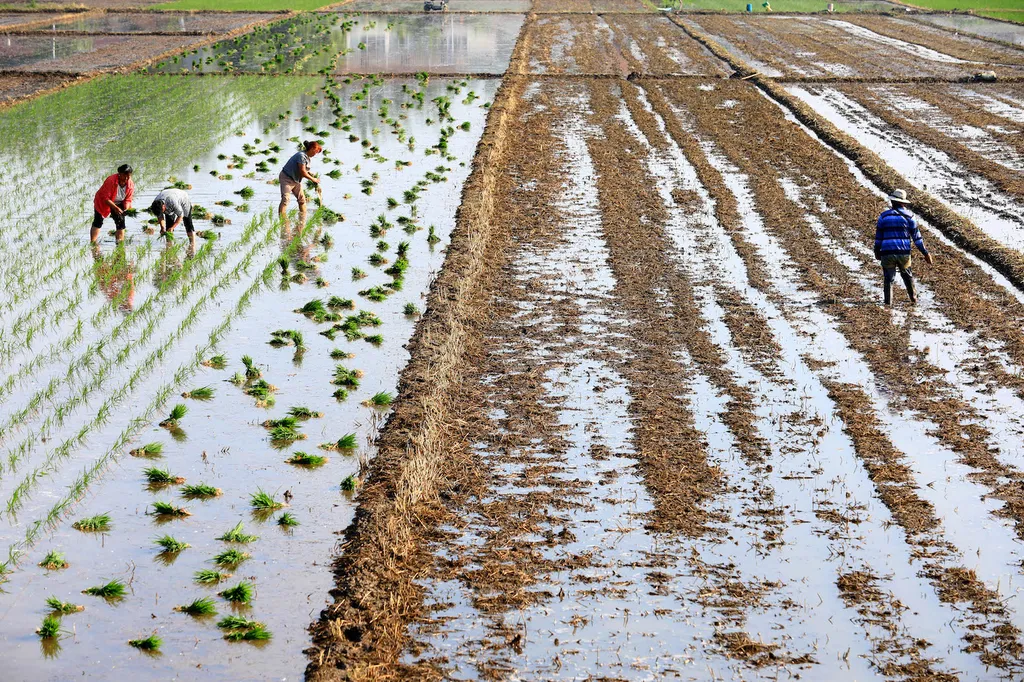In the heart of China’s rapid development, a pressing issue has emerged that could reshape the way we think about land use and agricultural sustainability. A recent study published in the journal *Remote Sensing*—translated from Chinese as “遥感” (Yao Gan)—sheds light on the stark differences between urban and rural areas in terms of cropland loss and fragmentation due to the expansion of construction land. Led by Jiahao Zhai from the School of Geography and Ocean Science at Nanjing University, the research focuses on Jiangsu Province, a developed coastal region that has experienced significant urbanization.
The study reveals that between 1990 and 2020, urban areas in Jiangsu saw a dramatic 44.14% decrease in cropland, while rural areas experienced a more modest decline of 5.97%. Conversely, construction land expanded by 2.61 times in urban areas and by 90.14% in rural areas. “The conversion of cropland to construction land is a critical issue, especially in rapidly developing regions,” Zhai explains. “Our findings show that 94.36% of the newly added construction land came from cropland, with rural areas in northern Jiangsu and urban areas in southern Jiangsu being particularly affected.”
The expansion of construction land has led to the continuous fragmentation of cropland, a phenomenon more severe in urban areas. This fragmentation poses significant challenges to agricultural productivity and food security. “The degree of land use change varies significantly between urban and rural areas,” Zhai notes. “This necessitates the formulation of differentiated land management policies to balance economic development with agricultural sustainability.”
The implications of this research extend beyond China, offering valuable insights for other developed coastal regions grappling with similar issues. As urbanization continues to accelerate globally, understanding the urban-rural differences in cropland loss and fragmentation becomes crucial. The study highlights the need for tailored policies that can mitigate the adverse effects of construction land expansion on agricultural systems.
For the energy sector, the findings underscore the importance of sustainable land use practices. As construction land expands, the competition for land resources intensifies, potentially impacting the availability of land for renewable energy projects such as solar and wind farms. “Balancing the needs of urban development, agriculture, and renewable energy is a complex challenge,” Zhai acknowledges. “Our research provides a foundation for developing strategies that can harmonize these competing demands.”
The study’s findings also emphasize the role of technology in monitoring and managing land use changes. By leveraging high-resolution land use data and advanced GIS spatial analysis, policymakers and planners can make more informed decisions. “Technology plays a pivotal role in our understanding of land use dynamics,” Zhai states. “It enables us to identify trends, assess impacts, and develop effective mitigation strategies.”
As the world continues to urbanize, the lessons from Jiangsu Province offer a cautionary tale and a roadmap for sustainable development. The research by Zhai and his team serves as a call to action for policymakers, planners, and stakeholders to prioritize agricultural sustainability and balanced land use practices. By doing so, they can ensure that the benefits of urbanization are not achieved at the expense of food security and ecological sustainability.
In the broader context, this study highlights the need for integrated approaches that consider the interconnectedness of urban, rural, and agricultural systems. As Zhai puts it, “The future of our land lies in our hands. It is up to us to shape it sustainably.” The research published in *Remote Sensing* provides a compelling case for why this matters and how we can move forward.

